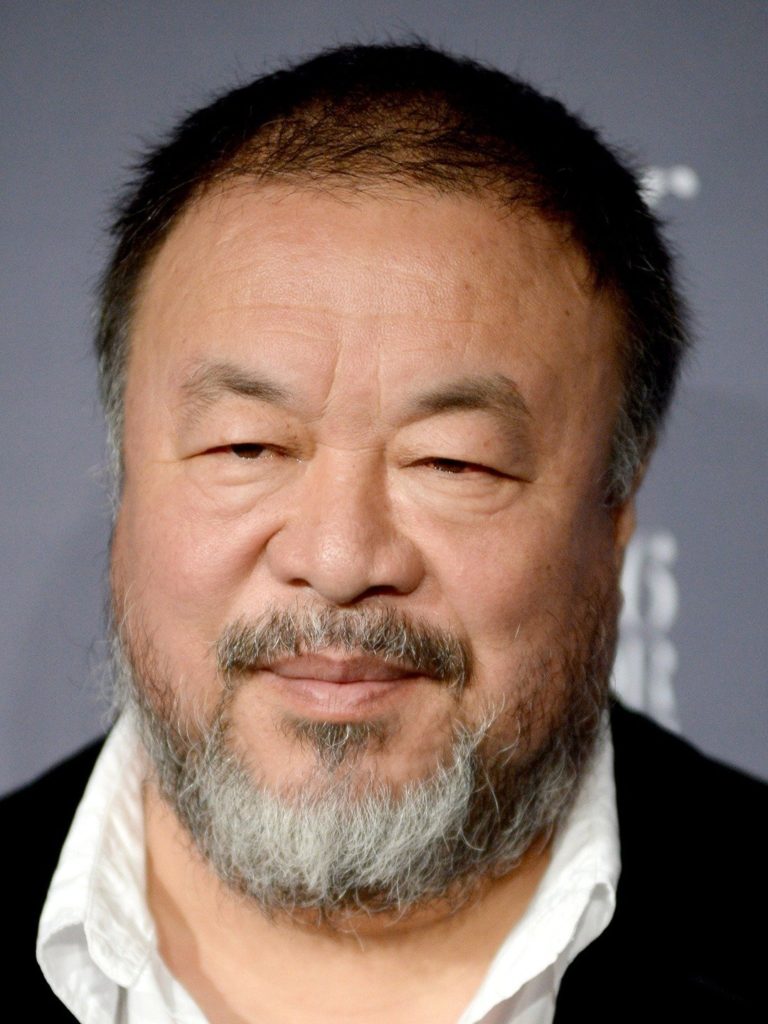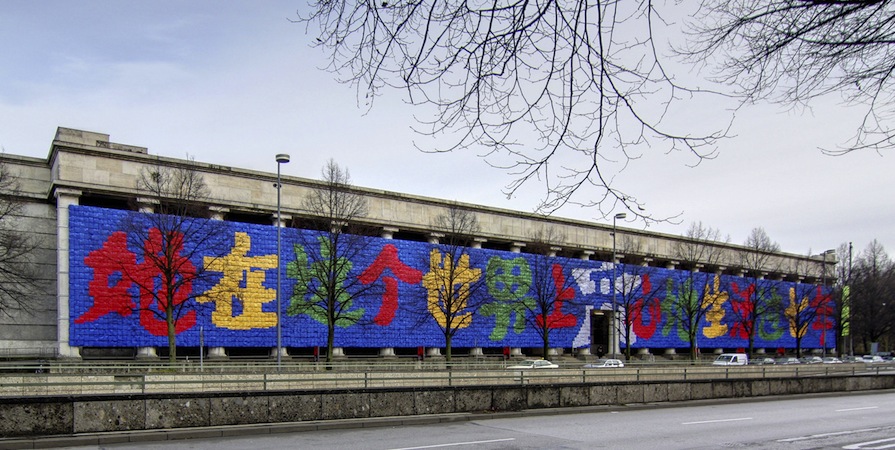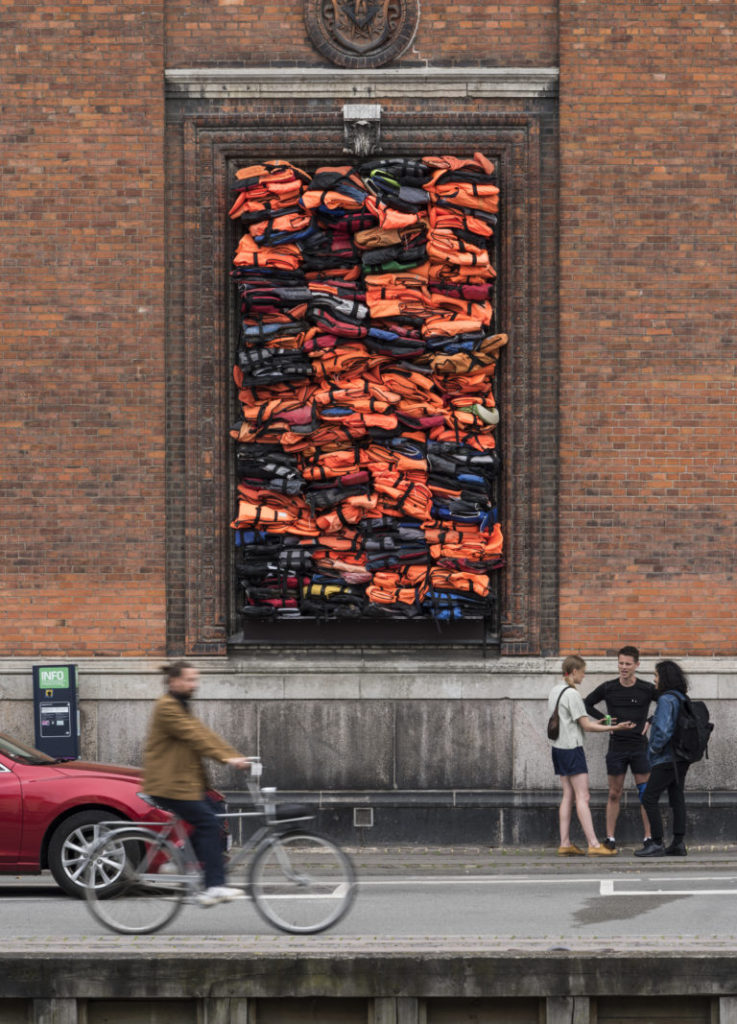
Ai Weiwei is a Chinese contemporary artist and activist. Ai grew up in the far north-west of China, where he lived under harsh conditions due to his father’s exile. As an activist, he has been openly critical of the Chinese Government’s stance on democracy and human rights.
Select Works By Ai Weiwei:
Remembering (2009)

For his one-man show in Munich Haus der Kunst in 2009, Ai Weiwei created a simple yet moving installation on the façade of the museum. He used 9000 school backpacks to spell out the words “She lived happily for seven years in this world” in Mandarin. What a spectacle to behold, right? The story behind the installation, however, might be hard to swallow.
In the aftermath of the Sichuan earthquake in 2008, many school buildings were destroyed, killing thousands of children. When Ai Weiwei visited these sites he couldn’t but help notice study materials and school backpacks littered around in the debris. The sight was quite disheartening, but more so was the words of a mother of one of the deceased children – that she’d like her daughter to be remembered that “she lived happily for seven years in this world.”
Each backpack represents a life lost in the earthquake that took place in the Chinese province of Sichuan in 2008. Ai used five bright and vibrant colors, such as blue, red, yellow and green, reflecting the psyche of a child, their joy and innocence. In addition, the colors have been used for the Toys R Us logo.
Sunflower Seeds (2010)
Ai Weiwei’s commission, Sunflower Seeds, is a beautiful, poignant and thought-provoking sculpture. The thinking behind the work lies in far more than just the idea of walking on it. The precious nature of the material, the effort of production and the narrative and personal content create a powerful commentary on the human condition. Sunflower Seeds is a vast sculpture that visitors can contemplate at close range on Level 1 or look upon from the Turbine Hall bridge above. Each piece is a part of the whole, a commentary on the relationship between the individual and the masses. The work continues to pose challenging questions: What does it mean to be an individual in today’s society? Are we insignificant or powerless unless we act together? What do our increasing desires, materialism and number mean for society, the environment and the future?
Soleil Levant (2017)

Kunsthal Charlottenborg Ai Weiwei: SOLEIL LEVANT
“The opening of Ai Weiwei’s (b. 1957 in Beijing, China) new installation, produced specifically for Kunsthal Charlottenborg and Copenhagen, will take place on United Nations International Refugee Day (June 20 2017). Named Soleil Levant, the installation barricades the windows of Kunsthal Charlottenborg with more than 3500 salvaged life jackets collected from refugees arriving at the Greek Island of Lesbos.”
~ Kunsthal Charlottenborg exhibition page
Good Fences Make Good Neighbors (2018)

Sculpture Nature: View more works from “Good Fences Make Good Neighbors”
Public Art Fund: “Good Fences Make Good Neighbors”
Inspired by the international migration crisis and current global geopolitical landscape, this exhibition transforms the security fence into a powerful social and artistic symbol with interventions across the city.
Entitled Good Fences Make Good Neighbors, which is a quotation taken from a poem by Robert Frost, the project entails art placed in three hundred locations throughout the five boroughs of New York City; the art included major sculptural installations—including one under the arch in Washington Square Park; and another, in front of the southeast entrance to Central Park—as well as posters at bus stops and banners on light poles.
The artist used spaces that traditionally feature advertising to showcase a new series of 98 documentary images from his research at refugee camps and national borders on JCDecaux bus shelters as well as Intersection’s LinkNYC kiosks citywide. A graphic work depicting the many forms of the global refugee crisis appeared on five JCDecaux newsstands in Manhattan. Each of the works grew out of the existing urban infrastructure, using the fabric of the city as its base and drawing attention to the role of the fence in dividing people. In doing so, the artist highlights how this form, ubiquitous yet also potent, can alter how we perceive and relate to our environment.
